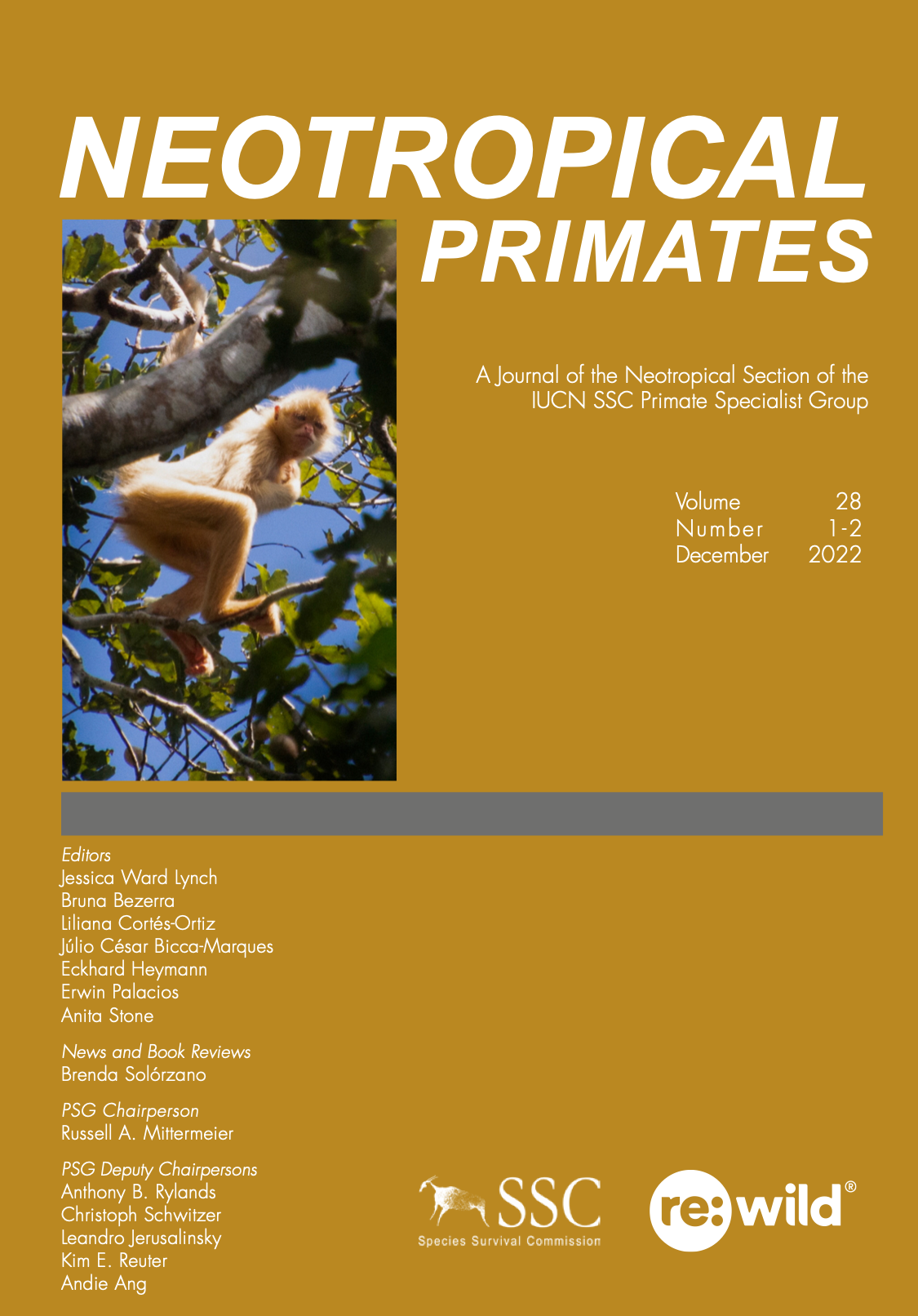Activity budgets of black and gold howler monkeys living in urban and natural habitats in southwest Paraguay
DOI:
https://doi.org/10.62015/np.2022.v28.347Keywords:
Alouatta caraya, behaviour, Central and South American primates, time budgets, urbanisationAbstract
As urbanisation continues to encroach upon the natural habitats of wild primates, it is important to understand how species adapt to these anthropogenic changes by observing how they allocate time to different activities. This study investigated whether activity budgets of black-&-gold howler monkeys (Alouatta caraya) living in an urban habitat (located in the city of Pilar, Ñeembucú, southwest Paraguay) differed from black-&-gold howler monkeys living in the surrounding natural environment of the Ñeembucú Wetland Complex. We recorded 404.32 h of observation over 73 days – 360.07 h of observation in the Urban habitat over 67 days and 44.25 h of observation in the Natural habitat over 6 days. When comparing activity budgets across habitat types, there was no difference in time allocated to any of the four behavioural categories, which could suggest that the black-&-gold howler monkeys are adapting well to increased urbanisation. Among all age-sex classes and habitats, resting was the most prevalent activity (67.51%), followed by feeding (13.05%), travelling (12.74%), socialising (6.17%), and other (0.53%). Overall, adult males spent significantly more time resting (mean= 71.14%) and less time travelling (mean=8.86%) compared to immature males (mean = 46.10%, P = 0.038 for resting; mean=17.83%, P=0.026).

Downloads
Published
Issue
Section
License

This work is licensed under a Creative Commons Attribution-NonCommercial-ShareAlike 4.0 International License.


